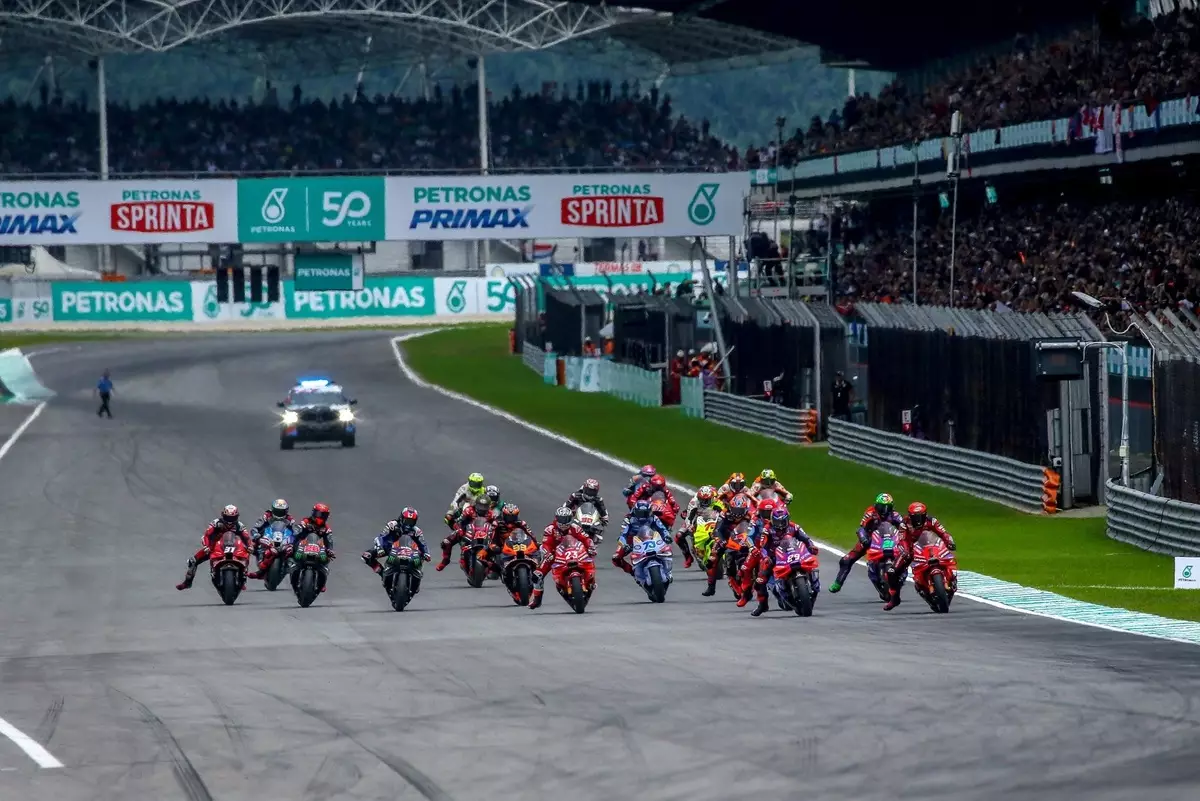MotoGP, the pinnacle of motorcycle racing, took a bold step at the commencement of the 2023 season by introducing sprint races into its weekend itinerary. This transformative change has not only altered the dynamics of race weekends but has also sparked considerable discussion among teams, riders, and fans. While many view the introduction of sprint races as a progressive development, others have raised concerns regarding its implications for qualifying sessions and the overall workload of teams.
A New Format with Mixed Reviews
The shift to include sprint races, which are shorter than traditional grand prix events, has undoubtedly injected a fresh layer of excitement into the MotoGP calendar. Sprint races, however, have also ignited a debate about their role in the broader context of the championship. Francesco Guidotti, a former team manager at KTM, has suggested that the current format places an undue burden on teams and riders, particularly with the compressed timeline that now characterizes race weekends.
Guidotti’s perspective highlights a critical point: the intense pressure of the existing format can overshadow vital aspects of racing, notably the qualifying rounds. With Saturday increasingly dominated by both qualifying and the sprint race itself, the standard time usually set aside for team strategy and performance evaluation appears to be diminishing. Qualifying sessions, once a weekend cornerstone, are now relegated to a fleeting two-hour window before the sprint, reducing their prominence in the grand scheme of the racing event.
One intriguing proposal put forth by Guidotti involves leveraging the results of the sprint race to establish the starting grid for the main grand prix. This concept, borrowed from the World Superbike Championship, suggests a more cohesive structure throughout the weekend—one where the stakes of the sprint race directly influence main race positioning. Such a strategy could help alleviate the frantic atmosphere of Saturday and potentially lead to a more strategic approach in both qualifying and sprint races.
By creating a system in which Friday afternoon and Saturday morning qualifying sessions are combined to determine the sprint grid, the two-day pressure cooker would be alleviated. Riders could race without the looming fear of a poor qualification outcome impacting their next race, thus encouraging a more measured approach to competition.
Another critique of the recent changes is the diminished significance of qualifying itself. As Guidotti aptly pointed out, the media’s focus has shifted towards the sprint races, resulting in a loss of journalist and fan engagement during qualifying. The traditional excitement surrounding pole position and the qualifying battle has been overshadowed by the immediacy and unpredictability of the sprint format.
For riders ranked outside the top nine, the sprint race can feel relatively inconsequential, as their final placements do not greatly impact their starting position in the main event. This leads to a disincentive to push hard during the sprints, as finishing positions below the ninth spot bear little consequence. Addressing this issue could revitalize the qualifying rounds, as greater stakes would encourage all riders to strive for excellence during both the sprint and the main races.
A Shift Towards Strategic Racing
Rethinking the sprint race’s influence on the championship standings may invite a more strategic approach among competitors. If racers recognized that their positions in the sprint directly impacted their main race grid, it would foster an environment where calculated risks are essential. This could ultimately enhance the quality of racing, turning each lap into a critical moment where the cumulative effect of strategy and performance is magnified.
While the introduction of sprint races at MotoGP has been met with enthusiasm by some stakeholders, the broader implications warrant a thorough examination. Engaging in discussions surrounding the integration of qualifying results with sprint outcomes could lead to a more cohesive and exciting framework for the series. Ultimately, returning the spotlight to qualifying may not only reignite interest in that aspect of racing but also enrich the overall experience for teams, riders, and fans alike.


Leave a Reply